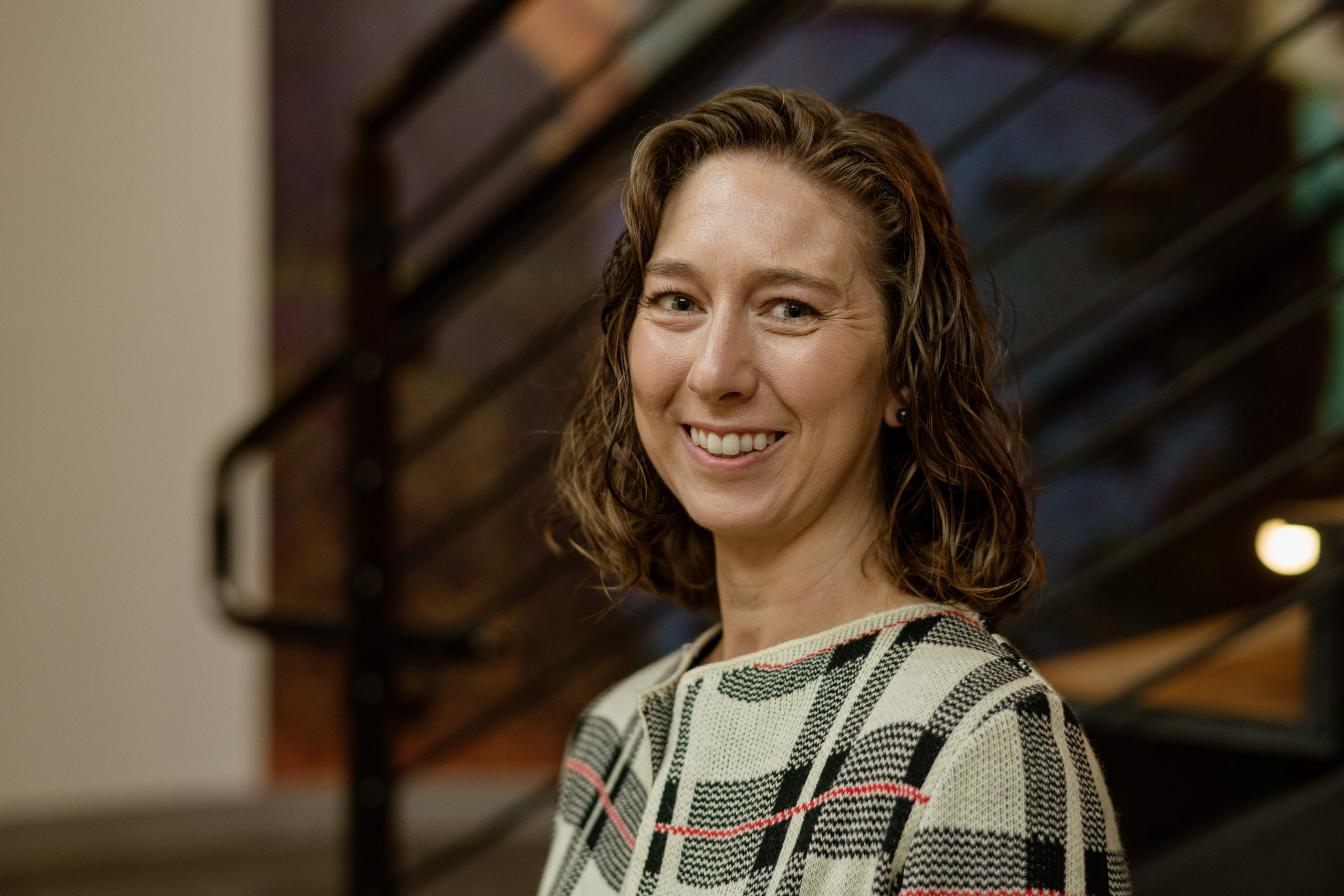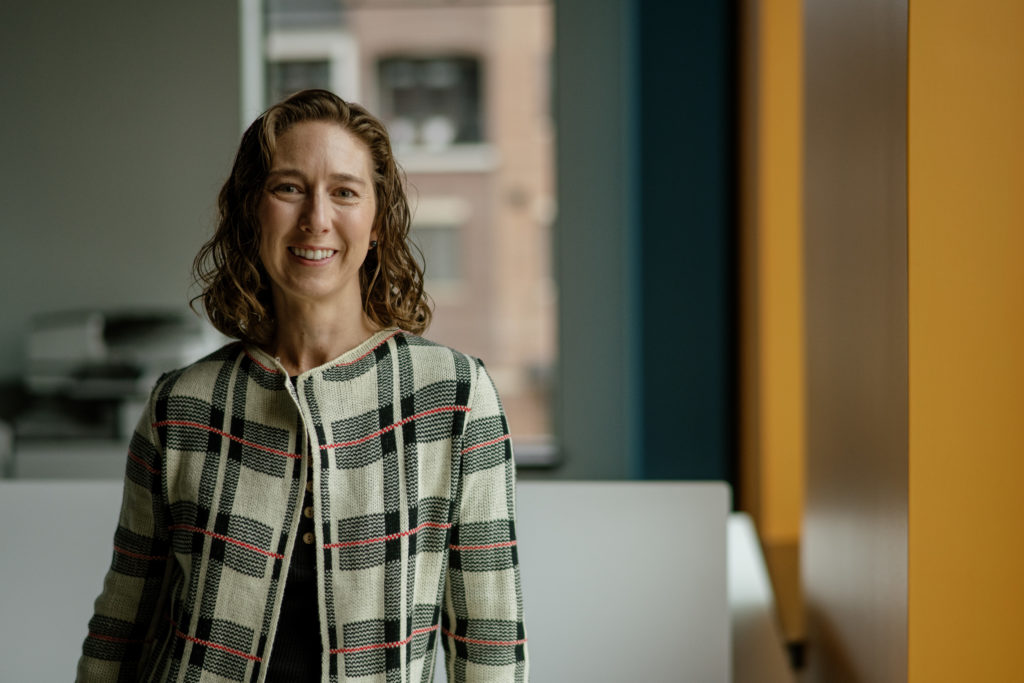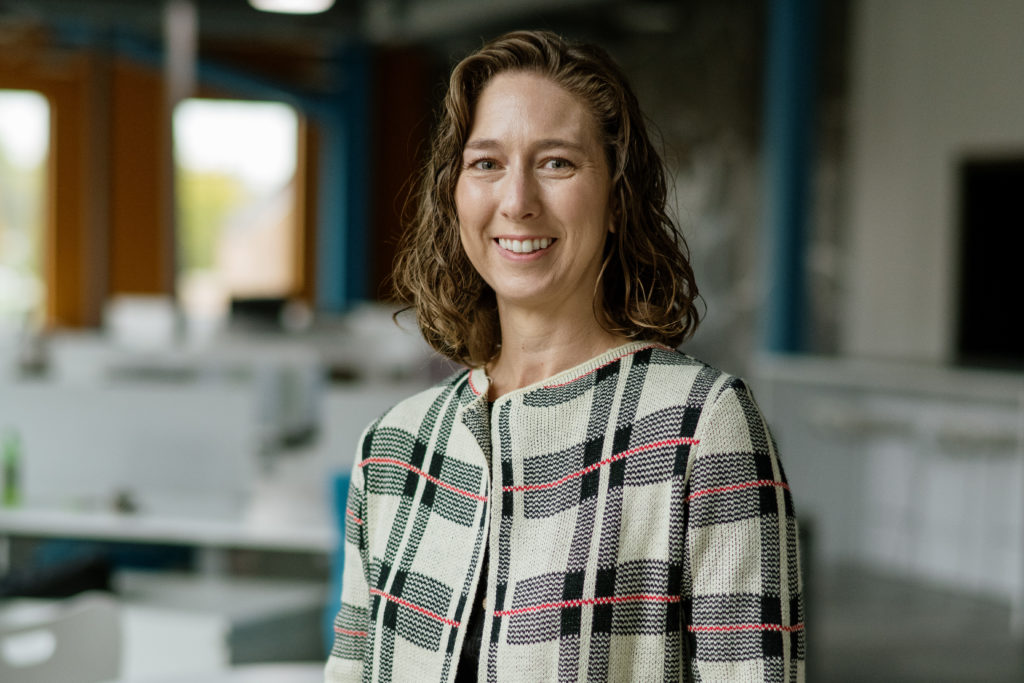
CATALYSTS INTERVIEW: Samantha Dahlby
Samantha Dahlby, Director of K-12 Education at NewBoCo in Cedar Rapids, Iowa, began her career in Engineering. Born and raised in Iowa, Samantha set out to become an engineer and did just that. However, Samantha’s love for engineering and passion for education and inclusion eventually led to NewBoCo.
Can you give us an overview of your career and how it has evolved?
I grew up in Waterloo, Iowa, and graduated from East Waterloo, and then I went to Iowa State University for college. My goal was to leave the state for a while and then come back when I had kids.
However, after internships, Intermac in Cedar Rapids is where I started my career as a software engineer, developing Bluetooth solutions and other mainly short-range wireless technologies for rugged mobile devices. In that role, I helped create a test harness to automate development testing. Toward the end of my time as an engineer, I also supported a very large program as a project engineer, so I worked more on the logistics and organizational side of the program.
While developing software, I was often asked to speak to students about my job and the field, and I was happy to do so. At that time, I had expected that more schools would have incorporated computer science opportunities for students in K-12 and found that to be far from reality. So as I became more aware of that, I became very passionate about advocating for computer science in schools and the opportunity it brought students. I lucked out on finding out about STEM careers in high school and wanted more students to become aware that there are opportunities here in Iowa. I eventually ended up volunteering for NewBoCo for some of their student programs at the time. And then eventually, I started working for NewBoCo to address that problem. I never expected to work in education, but I found a nice balance to pair my two passions and bring my technical knowledge to education.
What is The New Bohemian Innovation Collaborative, and what was the drive for its founding in Cedar Rapids?
NewBoCo is a nonprofit based in Cedar Rapids, Iowa. And it serves not only our city but also the state and the broader Midwest region. We have three main pillars, entrepreneurship, innovation, and tech education. The organization originated as the Iowa Startup Accelerator with the goal to collaborate in building a vibrant startup ecosystem in Iowa and then fostered resiliency in our region with a changing economy. The 2008 flood had impacted us, and during that time, it became apparent that companies would need more than just the Accelerator program to survive and thrive. And so that’s where our plethora of other programs spawned from and growing out of those needs. The K-12 education portion I work with is that long-term investment in educating students with the necessary skills and promoting available opportunities in Iowa.

How does NewBoCo’s company culture contribute to diversity, equity, and inclusion efforts?
We constantly strive to see diversity, equity, and inclusion as goals. There isn’t a finish line, and it’s constantly evolving. Our teams are made up of people who want to do the best we can for the many demographics we work with, whether in our city or statewide. To do so, we collaborate with other organizations to foster the best ideas and gather a variety of perspectives. We realize that we don’t have all of those perspectives in our organization, so those partnerships are really important. In addition, our culture encourages us to critique what we’re doing and ask how we can do better, which is not always easy.
We also take feedback seriously. And though it may take longer than we would like to change things, we put the effort to do so. One of the best examples of this is how our EntreFEST conference has a curation team with many people from outside of our organization.
NewBoCo hosts and participates in many different events to address problems in our region and learn about gaps that exist. Through those, we’ve built many relationships that we lean on when opportunities arise or point people to when their needs align and collaborate to make a bigger impact than the individual organizations could. For example, our K-12 team works statewide with educators, people in education, and those outside the state, to address gaps and needs that exist.
Outside of NewBoCo, how do you encourage innovation and idea-sharing in the Cedar Rapids community?
I am on the board of Cedar Valley Montessori School, a Montessori preschool, that I participate. I’ve also been on the Horizons Board. I have also been active for several years on the City Planning Commission.
Was that your passion growing up? What did you envision for your career as a child?
I had no idea what I wanted to do. I knew that I liked helping people, and I liked solving problems. I was all over the board. I wanted to make people happy, but I didn’t know what that meant in a job. One of the things I tried, mainly in fourth grade through middle school and high school, was job shadowing. My first job shadow was with the city mayor because I thought I wanted to go into politics and become president. And I quickly realized I did not want to be in politics. I want to work adjacent to politics. I remember job shadowing a physical therapist and even an interior designer. I was trying to find something to choose a path because educators and teachers in my life were pressuring me to figure out what to do. It was overwhelming, but I did not start off realizing that I wanted to be an engineer.
We constantly strive to see diversity, equity, and inclusion as goals. There isn't a finish line, and it's constantly evolving.
What mentors have you had? And how have they influenced your career path?
I had a high school math teacher who encouraged me to look into engineering, which I wasn’t familiar with and hadn’t heard about before, so I did some digging and figuring out what it was and realized there were many different types of engineering. So that gave me some direction. Then, a camp at Iowa State, the summer between my junior and senior year, allowed us to stay on campus, explore the different engineering majors they offered, go into different labs, and spend time there with other high school students. And that’s how I learned about computer engineering and got curious about that.
And then, in college, I had a horrible experience. I was not welcomed into computer engineering and was told I couldn’t do it. I was in a learning community designed to support freshmen by putting them in different groups, and they take the same classes together. And I had a group of my peers sitting after studying say they would have a startup company when we graduated and that I could be in a role outside of engineering. And I was so shocked. I didn’t know what to do at that moment. I’d never been told in my life that I couldn’t do something, but they were basing this all because I didn’t have prior experience with coding.
I was embarrassed by that situation, but my learning community mentor, unaware of the situation, encouraged me to keep going and keep trying things. He encouraged me to apply for the peer mentorship position, so I did that my sophomore and junior year, and he helped me get an internship somewhere that he had worked because he saw that I was interested in microcontrollers and electronics in that aspect. So he was very supportive in those times when I was questioning if I belonged.
Because of this experience, I want other people to know that you can still learn at any point in your life and be successful in this field.
I want other people to know that you can still learn at any point in your life and be successful in this field.
What advice would you give K-12 students considering a tech career path or aspiring to a leadership role?
I talk a lot about this with students, teachers, parents, everyone who will listen, that technology is important in every single company today. Every company is a technology company, so I often encourage students to consider what their other interests are. And then look for ways that technology might be a part of that or how they can solve problems that interest them through technology, so the technology piece doesn’t have to be their primary focus. Having the foundational skills and trying to get into schools gives them flexibility and resiliency in their career.
I talk about the spaghetti mix of a career and how you’re constantly building skills that you’re going to apply no matter what role you’re holding. And so, in my personal story, I started in the technical aspect, and I gained skills through that.
The field is so vast and changing that I encourage students to try many different things to figure out what they like. My advice is to find a place with technology because technology is everywhere.

What obstacles have you found to educate K through 12 students about technology and STEM careers?
I would say the size of a school and the amount of layers that you have to go through to initiate change. And so, our path from the beginning has been anyone and everyone willing to do that.
Often the smaller schools have less bureaucracy to work through. They have quicker buy-in, or it’s easy for someone to say, yes, I will do this. Or those teachers have some advocacy to do it because they have multiple hats that they’re wearing. Another obstacle might be the timing challenge of getting it into the schedule. It also might be capacity for teachers. Often we work with teachers that happen to have an extra period in their day, if it’s at the high school level or some extra time, and they get thrown into this willingly or not.
Have you found situations where educational leadership is hesitant, but the teachers advocate implementing NewBoCo’s resources?
Early on, I would say we saw more of the grassroots approach with teachers seeking out the opportunities because they saw the benefit for students or were interested in bringing it to their students. And in some cases, it was easy for teachers to do that and bring it to their school. And then, the administrators got on board because they were able to see the outcomes.
One of my favorite things is talking with administrators, and they’ll say they’ve got one semester to see how it goes, and if there’s interest, maybe they’ll increase it. And so for the first year they have it, they’re able to recruit seven to 10 students. And then when scheduling comes around the next time, they suddenly have 30 or more students. And they’ll say they didn’t realize there was that much interest and were unsure that they could handle all of them. That happens all the time.
I even had one teacher that deserved a trophy. He taught over 60 students in one section in one year because he had enough demand and couldn’t tell them no. So I give him props for making an effort and not wanting to turn away students that were interested and showing that there was a lot of interest in their school.
Why is it important to have people of different backgrounds in technology?
My primary response is that technology provides global access, which is inspiring but can also cause unintended harm. If we don’t understand others’ perspectives and cultures, we need people to point out what others have missed. We need diversity in thought to highlight flaws in designs that may limit accessibility, to think through ideas from the beginning to prevent problems and make solutions more inclusive.
A lot of times, we’ll go into communities, and they’ll say all their students look the same. They have that default understanding or stereotype of what diversity is with race, ethnicity, gender pieces. And I want people to start considering the broader perspective of different abilities, the different socioeconomic pieces, rural versus urban, that broader perspective of diversity. I’d like to see this be more welcoming instead of drawing lines, naming things that need to be included, and moving past what people look like. That’s something that we try to keep at the forefront of all of the different aspects that we all bring to the table. And I think that will help us in Iowa because most of us probably look the same, but we’re all different underneath.
As you look to the future, how would you like to see STEM education progress in Iowa?
From my perspective, I would love to see us limit the content silos within education. Right now, there’s reading, then math, then science, and everything is in silos. And to me, this promotes the concept of “I’m not a math student” or “I’m not a reading student” because students only see their skills in these silos. This way of learning doesn’t expose students to the richness that interdisciplinary education can provide. If we mix silos, we can help students see themselves in different ways, including new strengths, and understand that they can explore careers that maybe they aren’t super strong at. And by taking some of those silos apart and mixing up the content a bit more to complement each other would help with that.
We need diversity in thought to highlight flaws in designs that may limit accessibility, to think through ideas from the beginning to prevent problems and make solutions more inclusive.

